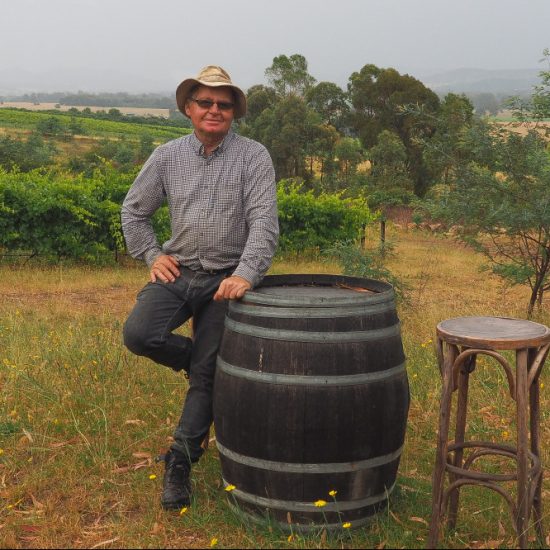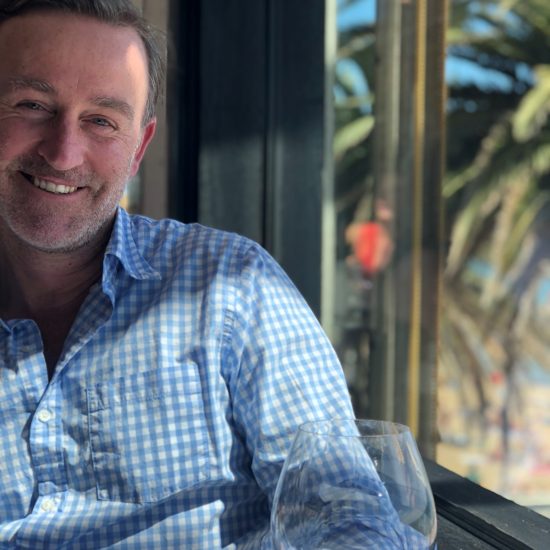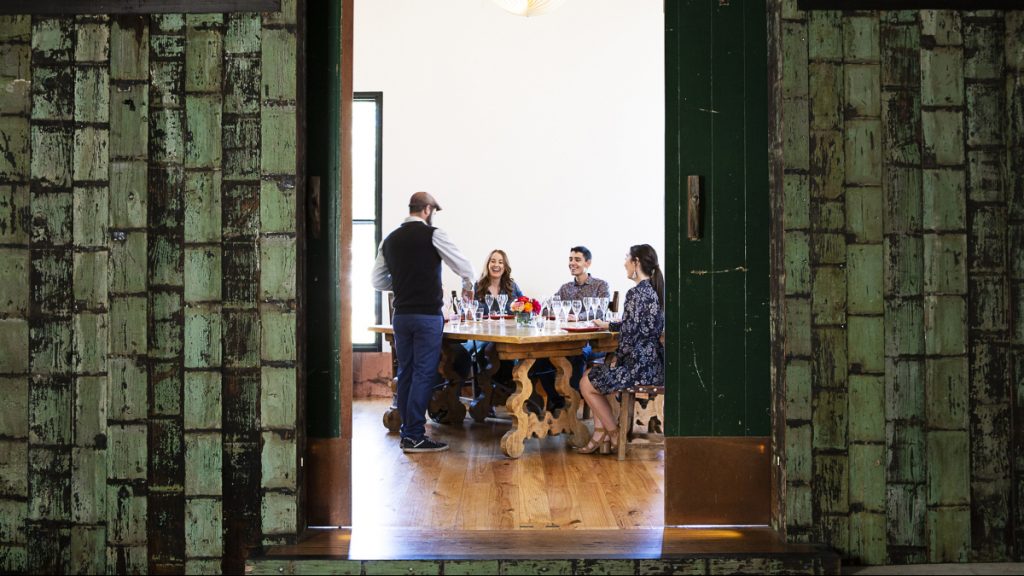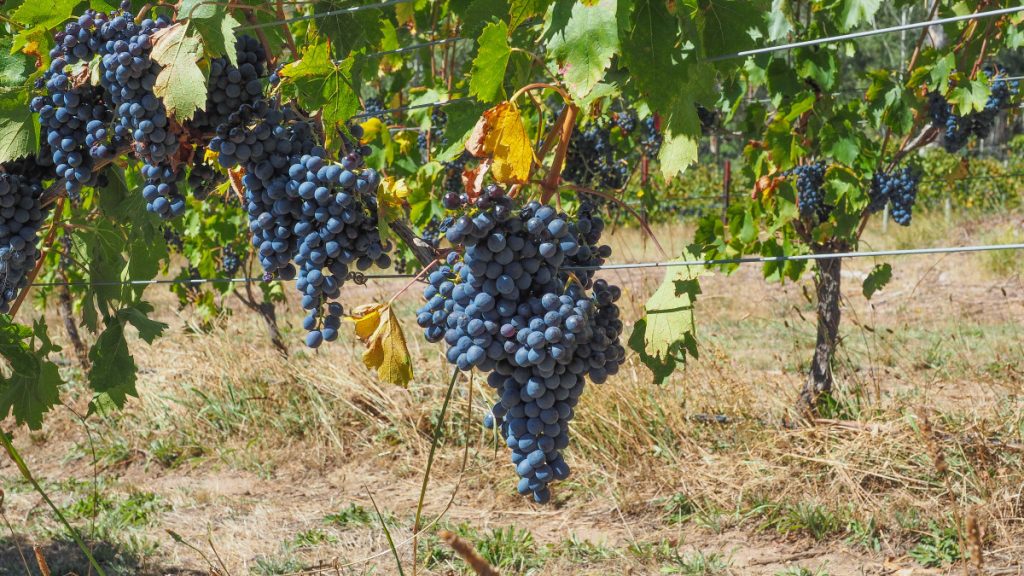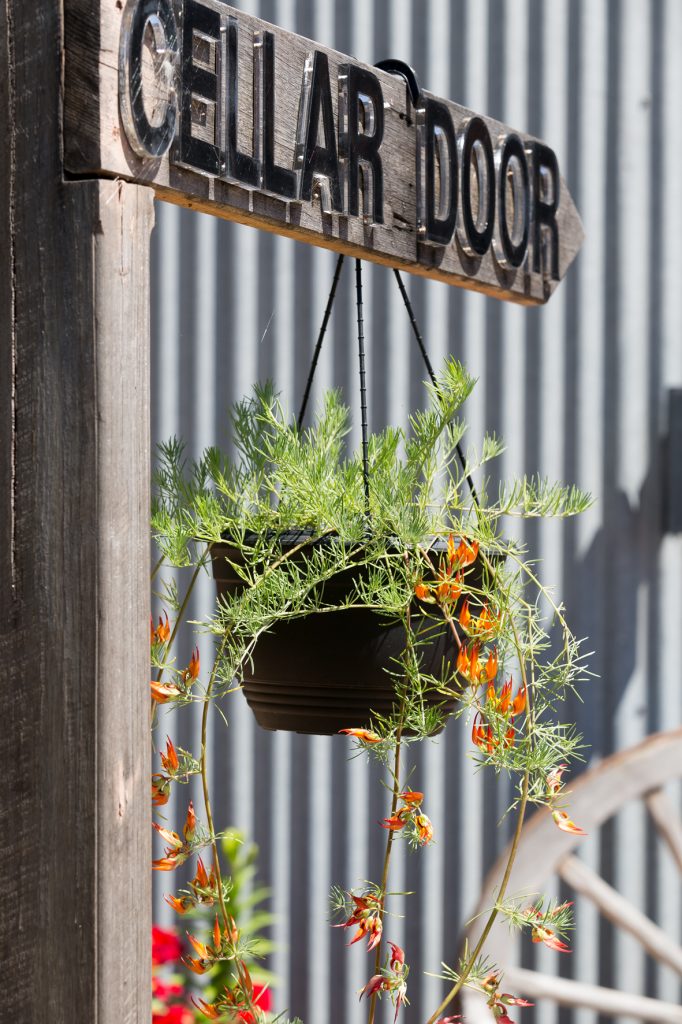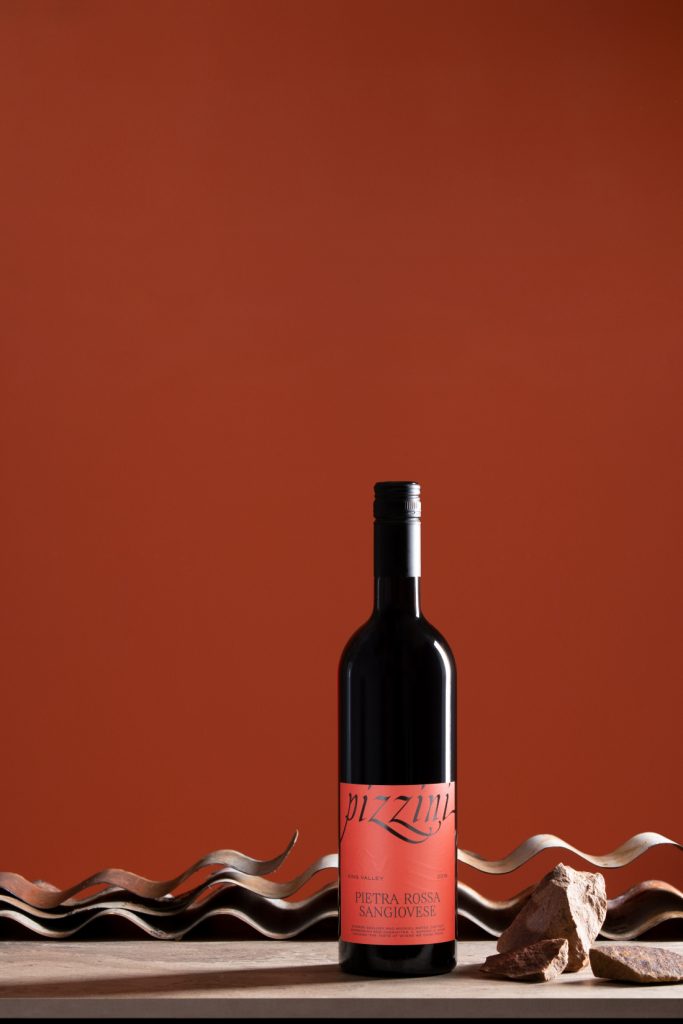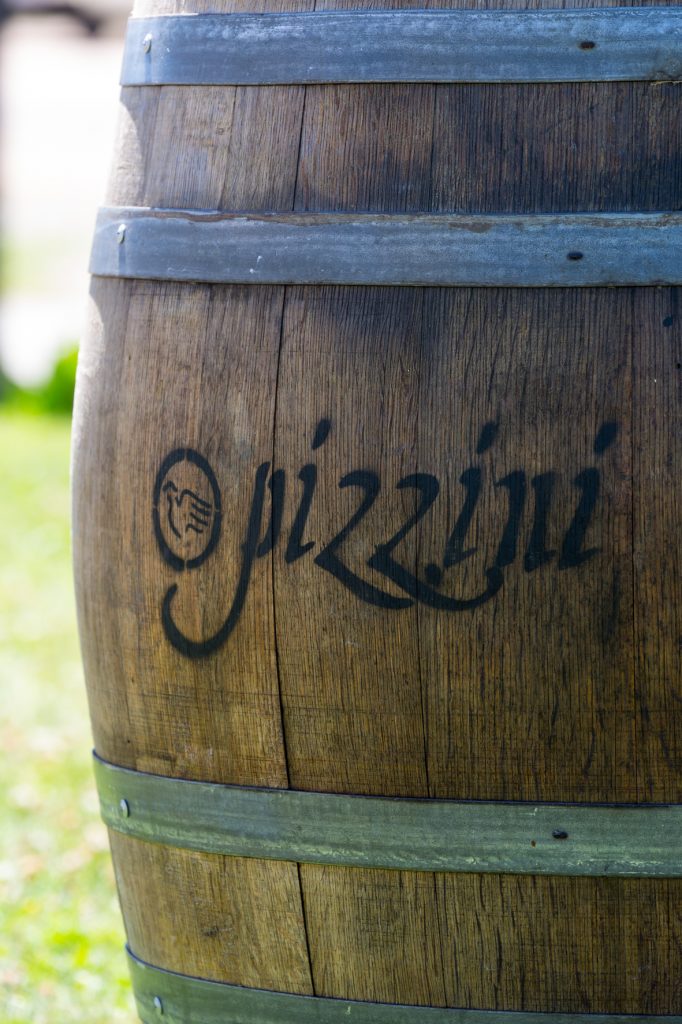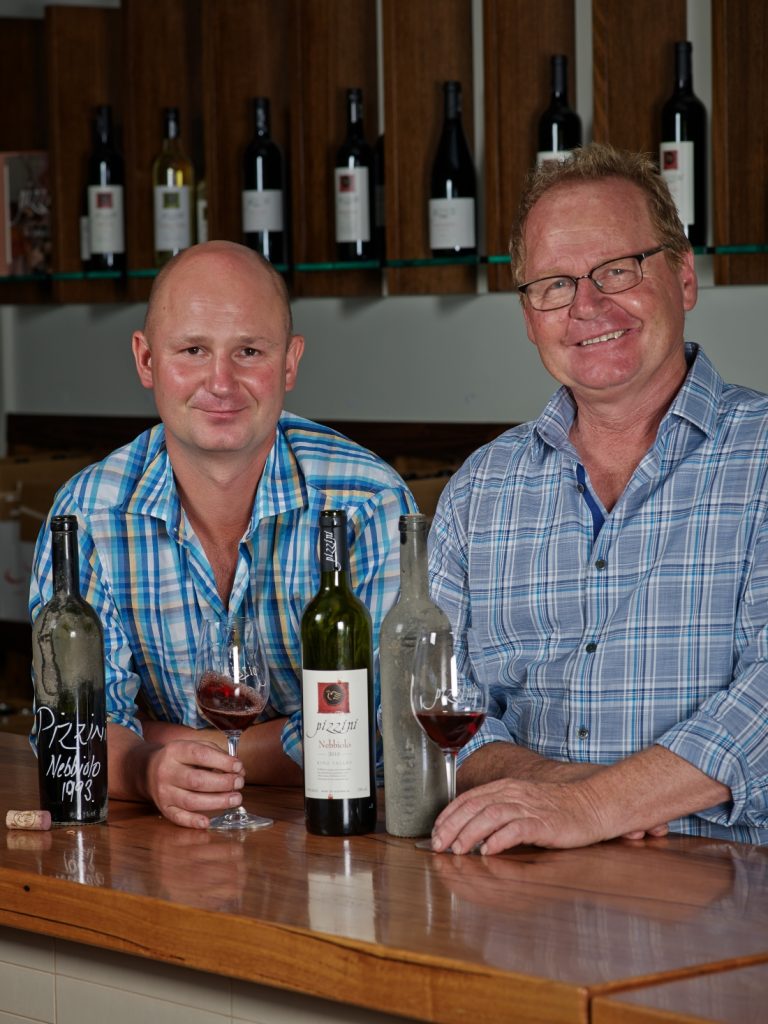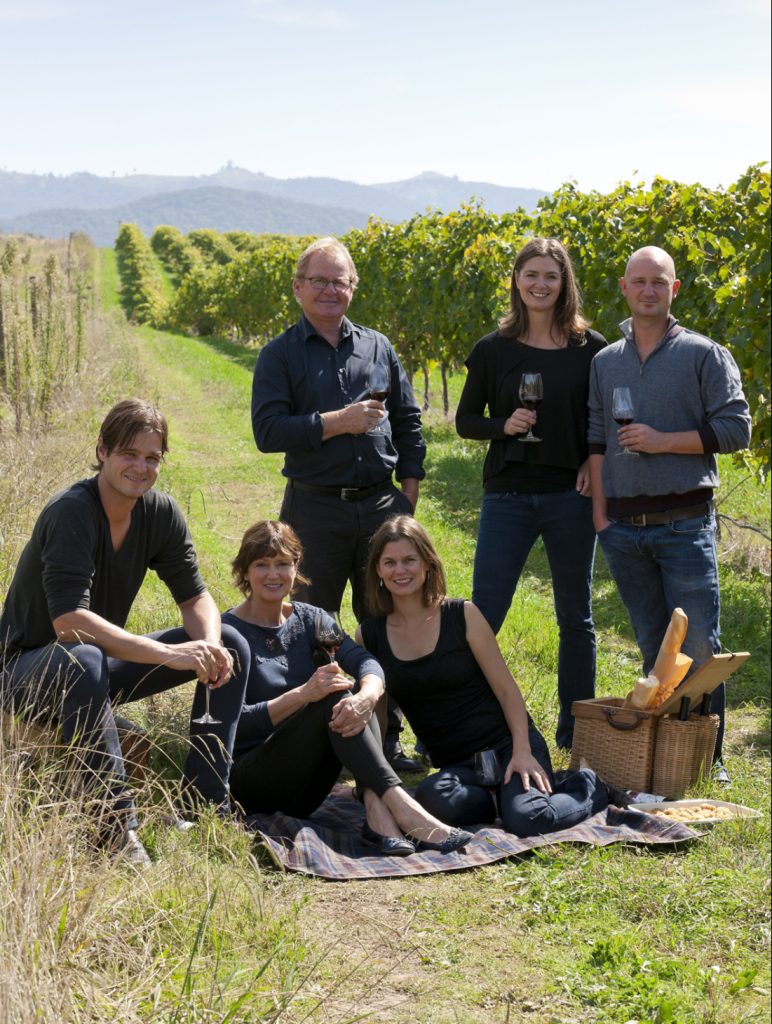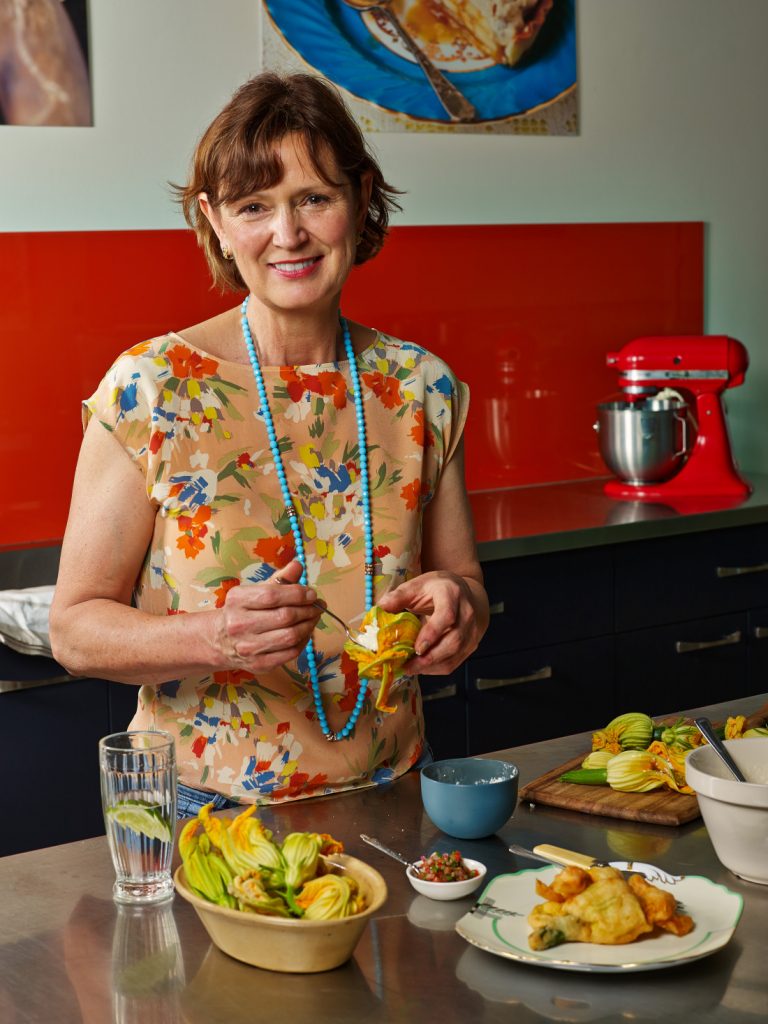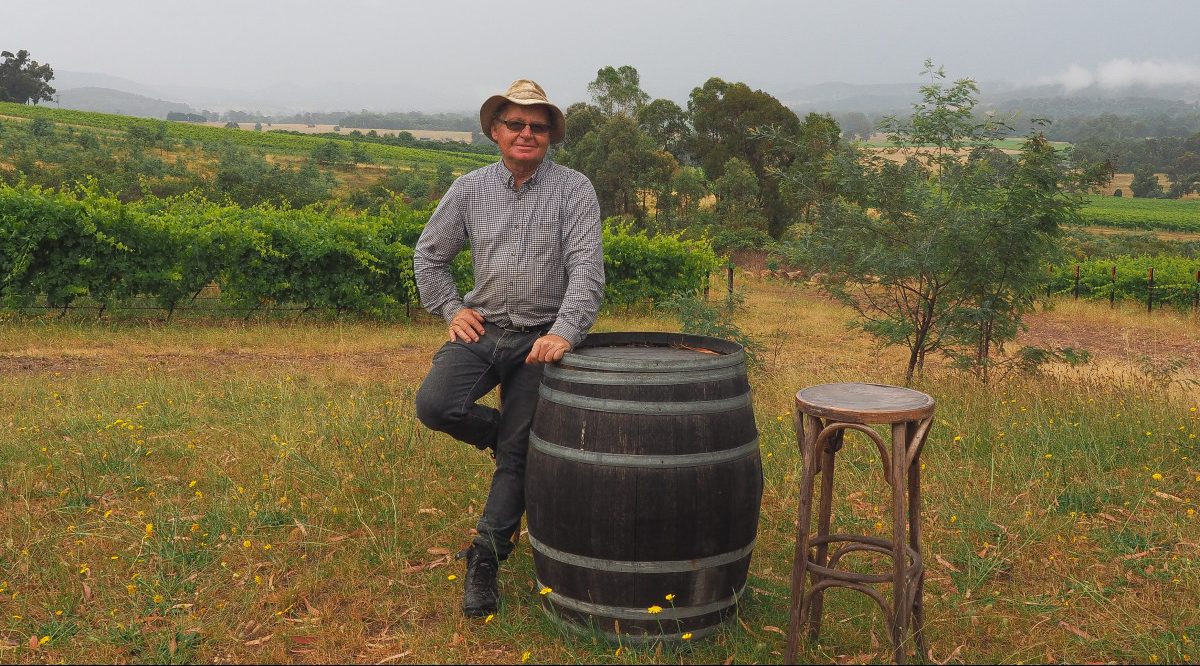
Meet the Winemaker: Alfredo Pizzini
Gianni’s interview with winemaker Alfredo Pizzini.
As a part of our ‘Meet the Winemaker’ interview series, and in recognition of Vita Food & Wine Tours upcoming King Valley Wine & Food Tour, I took a trip to Victoria’s high country to have a chat to winemaker Alfredo Pizzini of Pizzini Wines. We sat down together at their picturesque cellar door overlooking some of the vineyard and gardens. We spoke at length of Alfredo’s family heritage, their history in the King Valley and how, from humble beginnings this family is now at the forefront of innovation and production of Italian varietals in Australia.
WHERE DID YOUR FAMILY ORIGINALLY HAIL FROM IN ITALY?
“Trentino Alto Adige Region in Northern Italy close to Bolzano at the foot of the Dolomite Mountains”.
FROM THE MOUNTAINS OF NORTHERN ITALY TO VICTORIA’S HIGH COUNTRY. HOW DID THE PIZZINI FAMILY COME TO SETTLE IN THE KING VALLEY?
Alfredo took a long pause as I ask him to think back over nearly 60 years of history. He recalls how his Uncle Alf in 1952 as an adventurous 19-year-old who was fed up with the world, went to Genoa with a small suitcase and was determined to get on any ship going in any direction.
“When he got to Genoa he was thinking he was going to be going to Canada, but Canada had closed its borders and so had America. There was a ship called the Fairstar I think it was, so he jumped on it, and it was going to Australia. Talk about throwing darts at boards. Good old uncle Alf threw a fairly big major dart.”
Alfredo’s uncle Alf was joined by his Uncle Arnold and the two young Italians started out by running a café in Beechworth called the Emerald Café. “They couldn’t understand, because it was 5 o’clock closing of the public bars and think there were about 42 hotels in Beechworth at the time, why (the locals) would all turn up at the Emerald café and within minutes they were all fighting, so a lot of the time they would have to close the doors and stop serving.”
Dealing with rowdy locals that would descend on the café after the pubs closed was enough for the brothers to re-assess their options. Alfredo explains, “They were pretty keen to get out of that line of business and the tobacco industry was just starting to loom and to really start functioning in Victoria.”
With two brothers already in Australia Alfredo’s father Roberto and mother Rosa made the decision to leave their home in Italy for a new beginning in Australia.
“Dad already had the two brothers in Australia who had been here for two or three years before hand. So they were pretty much encouraging him to come over.”
“My father was an engineer by trade and his passage into Australia was to work as a skilled migrant on the Snowy Mountain Scheme”.
Alfredo points out the power lines at the end of the property from where we are sitting at the Pizzini Cellar Door. “See the power lines down there? That’s what he would have been working on at that period of time.”
Alfredo’s father didn’t end up working on the Snowy Mountain Scheme as originally planned and as fate would have it instead decided to work together with other members of the family in the burgeoning tobacco industry. In the early years, in addition to learning a new language and culture, the family overcame considerable hardship including record floods and a failed first tobacco crop. Alfredo’s father and brother eventually settled on buying the piece of land in the King Valley where the Pizzini vineyard is today.
“It was 200 acres at about $1,000 an acre which is the equivalent of nearly $20,000 an acre today. But the tobacco industry was booming so the family did really well. When you look out the front from the carpark to the river it was full of tobacco at this time of year.”
“I often praise mum and dad and my uncles for the selection that they made of this land in the King Valley, it’s God’s Country. Whether your growing grapes, running cattle or just living here; it gets rain, it gets heat and has lovely soil. It has proximity to major cities, but you can’t see any. The opportunities are endless. It reflects what the land was worth 60 years ago which was a lot of money an acre at the time.”

Pizzini Vineyard in the King Valley
HOW DID THE CONVERSION OF THE FAMILY PROPERTY FROM TOBACCO TO VITICULTURE COME ABOUT?
“(The Tabacco Industry) was becoming too controlled by the multinational companies who weren’t prepared to pay a price that reflected the work and the quality of the product, so we looked to diversify. Brown Brothers were looking for suppliers to diversify their intake of fruit so my wife Katrina and I planted our first vineyards in 1978. We planted traditional French varieties such as Riesling, Chardonnay, Sauvignon Blanc, Shiraz, Cabernet and Merlot.”

Converted Tobacco Drying Kilns – Pizzini Vineyard
Winemaker Alfredo Pizzini goes on to talk about their transition from growing traditional French grapes to growing Italian wine varieties, why he loves these Italian wine varietals so much, and the people who helped to make that transition such a success.
“At the same time I was really working with Sangiovese, Verduzzo, Arneis and Nebbiolo and probably in the early stages they were nearly more for our own consumption. I really love those styles of wines, which have a real lightness about them yet still have a powerful palate, quite refreshing, lovely bright acidity and really lovely natural tannins. I think they are fantastic.”
“Within our journey success doesn’t come from one, it come from a lot people being apart of what you do. You harness everyone’s knowledge as much as you can and then you incorporate it into your operations.”
One such person was former head viticulturist at Brown Brothers for 20 years, Mark Walpole. Alfredo reflects on their time working together in the late 80s early 90s.
“We got on well and started making wine together. After our days at work we would get together, Mark would show up with a nice bottle of Chianti Classico and my wife Katrina would cook up a great meal. Katrina & Mark’s partner thought the wine we were making was pretty ordinary.” Alfredo says tongue-in-cheek.
“We just wanted to learn and understand more about the fruit. 1991 was my first Nebbiolo and the first produced in Australia.”
Others such as Alfredo and Mark Walpole shared a similar passion and saw the potential of Italian varietals such as Gary Critteden of Critteden Wines in Dromana. In the early 90s Gary would source Nebbiolo from Alfredo for his own label.
“We have come across fantastic people such as Gary Crittenden who has no accent whatsoever but reckon he has more Italian blood in him than me. Gorgeous family. They played a fairly big part in this journey of the love of Italian varieties in Australia.”
“We struggled to get our wines like Riesling, Cabernet and Shiraz into the restaurant trade, because we were competing against Barossa, Maclaren Vale and Mornington, it was really difficult. When we turned up with our first bottle of Sangiovese my first distributer Marshall Waters of Winestock said, give them to me. In no time he had them in nearly every restaurant in Melbourne.”
“It hasn’t looked back really. The wine is bloody good drinking, it just needed to convince people.”
Tastes were changing as well. “I remember in the beginning there would be twenty people in our cellar door and I would ask, who here has been to Tuscany? and about 20 people put their hand up. Then I would ask, what did you drink over there? and they all said Chianti! Well, that’s what you are drinking here. They had no idea they were drinking Sangiovese. Our biggest fans came out of that market of people that travelled the world and wanted that same experience here in Australia.”
- Kiln Room Tasting Experience
- Sangiovese Grapes
FROM MODEST BEGINNINGS TO BEING AT THE FOREFRONT OF INNOVATION OF ITALIAN VARIETALS IN AUSTRALIA
“We are trying to establish ourselves as the masters of producing Italian wine styles. In trying to achieve that we have involved a few other people such as Alberto Antonini, a wine consultant out of Tuscany, together with a soil scientist from Chile and in collaboration with my son Joel who is the winemaker now we have mapped the whole vineyard to get a very clear understanding of the soil types we have got and their abilities. That has been a real winner.”
“It has given us the ability to say if we want to make our Pietra Rossa which is a slightly more chianti classico style Sangiovese these are the sites within the sites that we select the fruit for it. We have applied a lot of experience with science to get a really clear understanding of terroir.”
“Our vineyard is living on about 700/800 acres of land and there about 200 acres under vine but there are probably about 5,000 different microclimates within this area. Getting the science to understand all that, and then just personal experience gives you a better ability as a winemaker to know what you are going to make. You have to understand your raw materials.”
- Pizzini Cellar Door
- Pietra Rossa Sangiovese
- Pizzini Wine Barrel
TELL US A LITTLE ABOUT YOUR LOVE OF NEBBIOLO?
“Nebbiolo, why would you drink anything else! What we really want to do when we put a Nebbiolo wine in front of you, and you pick it up and smell it, (you will say) yes, I know what this is. The aim is to capture the full characteristics of the variety itself and to get the best expression.”
“I think we can compare ourselves if we want to some of the top producers in Piedmonte. Very comfortable to see our wines amongst your Cesare’s and Gaja’s in style. My benchmark is not price, my benchmark is the top five producers of Nebbiolo in Piedmonte. So we benchmark ourselves against the culture and values of making and respecting that variety.”
I think Nebbiolo is working well in the King Valley.
“I have been doing it for 35 years so we are constantly learning to capture the best. When you talk about the Italian families, well they have been doing it for 300 years. Those nuances you don’t learn them in a book you only learn them by experiences, making and trialling. I think we do a pretty good job. We might be the only winery outside of Piedmonte in the world that would have 32 vintages of Nebbiolo in the cellar. What is more important is that they are bloody good drinks and they age brilliantly. It is going to be interesting, I have always said that it is going to be a two generational project and that Nebbiolo will become very famous for us.”
HOW HAS IT BEEN WORKING WITH YOUR SON JOEL & THE NEXT GENERATION OF PIZZINI’S?
Alfredo has a very proud look on his face when we are speaking of his son Joel who has been the chief winemaker at Pizzini wines since the early 2000’s.
“We get on pretty well, we always have. Joel has been at the helm now as the chief winemaker for nearly 20 years and maybe he is just starting to listen.” Alfredo jokes.
“He is a great wine maker, great pallet, great sense of understanding of the vineyards, the fruit and the flavours. He has got all the right ingredients. He is an artist. Which is beautiful.”
- Joel & Alfredo. Credit. Jamie Durrant
- Pizzini Family
- Katrina Pizzini. Credit Jamie Durrant
“We are pretty strong on succession, we are already grooming the next generation.”
As we are speaking Alfredo points out two grandchildren helping Alfredo’s wife Katrina in her ‘A Tavola’ Cooking School just behind where we are sitting. All four of Alfredo and Katrina’s children work in the business. He is assured the next generation of Pizzini’s will continue in the running of the family vineyard.
HOW DO YOU LOOK AFTER THE LAND AND ENVIRONMENT?
On my last visit to the Pizzini Vineyard with one of our tour groups around harvest time I remembered Joel showing us a portion of the vineyard that they were trialling organic farming and they were very encouraged by the results. Alfredo talks about this approach and about his love of and stewardship of their land in the King Valley.
“Our land here is probably as good as if not better than when we inherited it nearly 60 years ago. We live in a biodiversity that is second to none in the world. We are not going to muck around with it too much.”
“We apply a lot of organic principles to the way we live and manage our land. That’s where we want to be but to say we are going to go 100% organic, probably no. It will be a process over time. There may be some blocks that are 100% organic if the gods allow us but there will be a lot of parts that will be just managed with love.”
“To give you an example, the water way at the end of the property is full of fish and crayfish. They wouldn’t be there if there are chemicals in it because crustaceans are very sensitive to chemicals.”
“Alberto the Italian consultant we employ who travels the world always remarks that this is one of the best bio-diverse valleys that he has seen in all of his travels. He is just in awe when he sits in the middle of our vineyards and its full of spiders, beetles, snakes and birds such as eagles and hawks flying around.”
Alfredo talks about living in harmony with nature including the birds who take care of some insects and jokes, “They are pretty cheap to employ let me tell you.”
“We live on this earth together. We plant a few acres for them (nature). If we want x amount of volume of grapes and we need 100 acres we will plant 110. They are allowed to take 10%, and they can have it.”
Thank you for your time and insight into your family’s incredible story Alfredo.
If you would like to meet winemaker Alfredo Pizzini, his son Joel and learn more about Italian varietals in the King Valley join our upcoming Vita Food & Wine – King Valley Wine & Food small group tour. Come with us beyond the cellar door to meet the people and families behind the labels. Limited availability!
Contact us to secure your place today.

